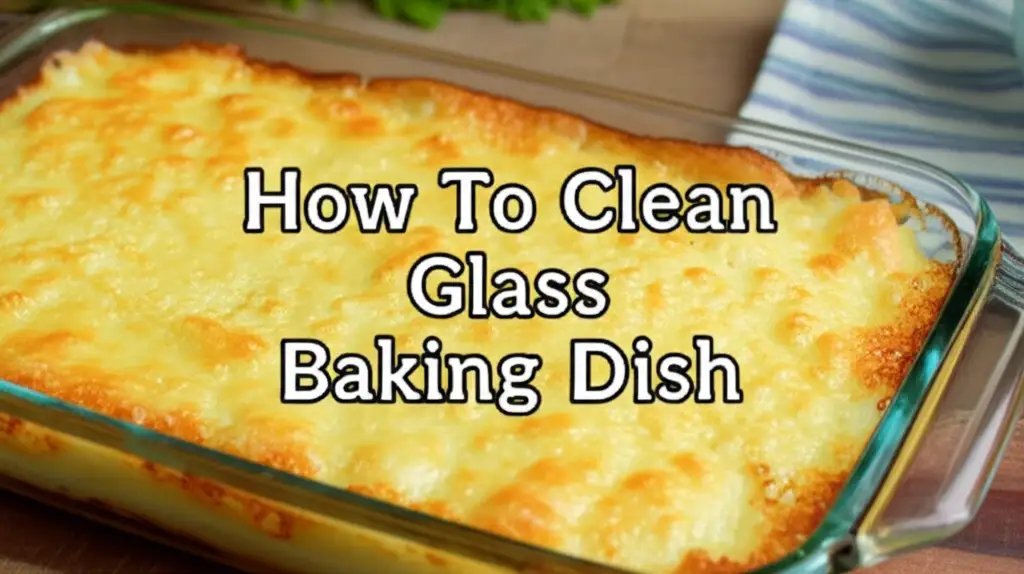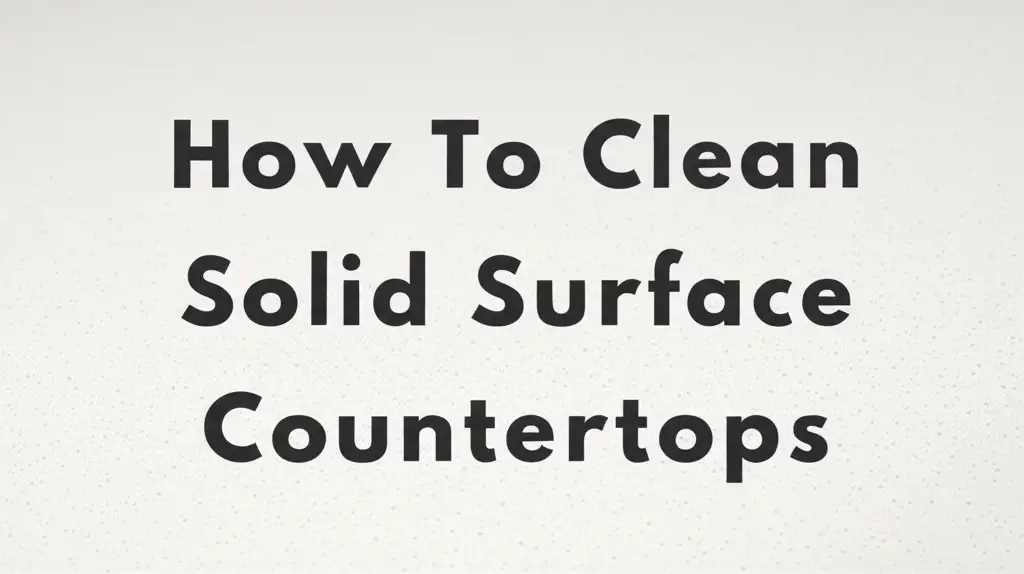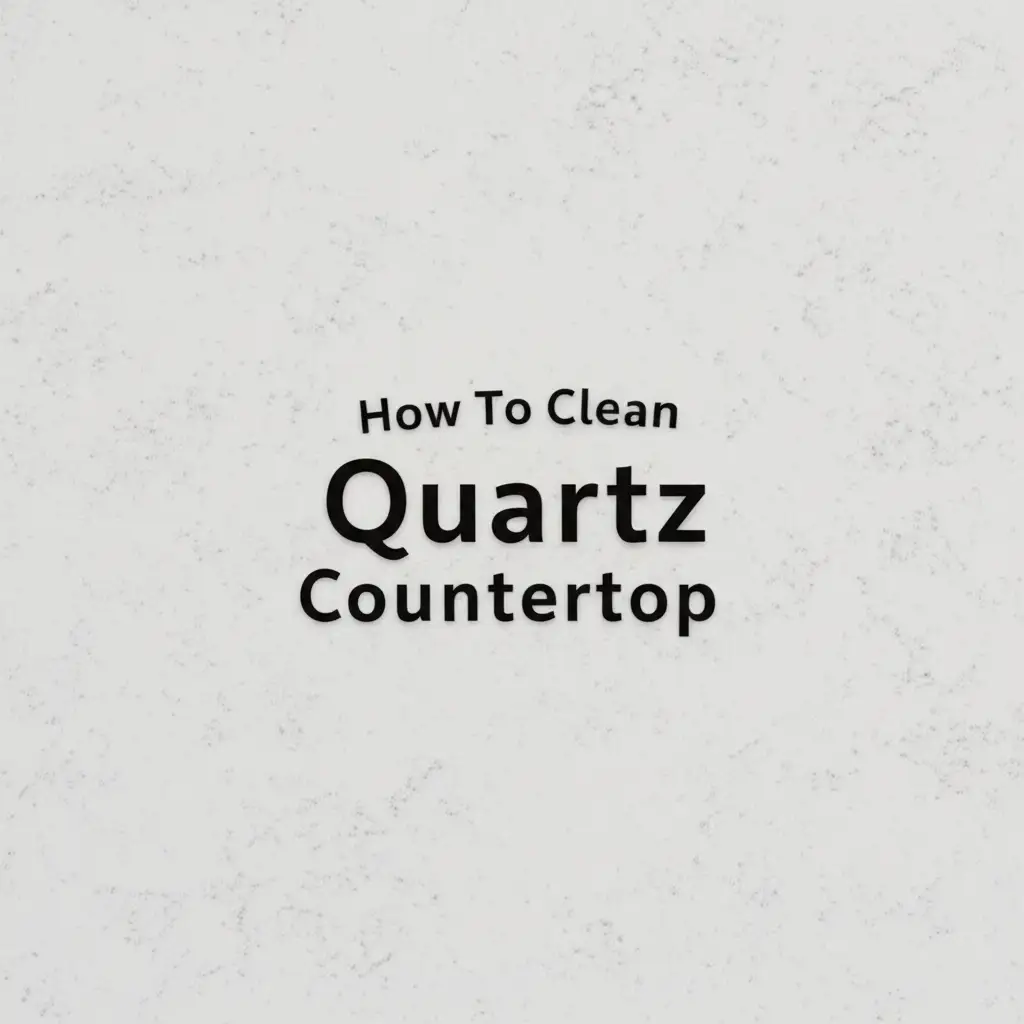· Home Cleaning · 10 min read
How To Clean Glass Baking Dish

Sparkling Clean: How To Clean Glass Baking Dish
Do you have a glass baking dish with stubborn baked-on food? It can feel frustrating when your favorite dish looks cloudy or dirty. I know the feeling well. You want your kitchen tools to look new and clean.
Glass baking dishes are popular for their even heat distribution. They also let you see your food cooking. But they often get covered in burnt food and grease. This guide will show you simple ways to make your glass baking dish sparkle again. We will cover basic cleaning to deep stain removal.
Takeaway
- Act Fast: Clean your dish soon after use to prevent tough stains.
- Soak First: Warm water and dish soap loosen most food bits.
- Use Baking Soda: A paste of baking soda and water lifts stubborn burnt food.
- Apply Vinegar: Vinegar cuts through grease and removes cloudy haze.
- Be Gentle: Avoid abrasive scrubbers that scratch glass.
- Rinse Well: Ensure no residue remains for a streak-free shine.
To clean a glass baking dish, first let it cool. Then, soak the dish in hot, soapy water. This loosens food. For tough spots, make a paste with baking soda and water. Apply it, let it sit, then scrub gently. Rinse well to remove all residue.
Why Your Glass Baking Dish Gets Dirty
Glass baking dishes are wonderful for cooking. They let you see how food browns. Yet, their clear surface also shows every spill. Burnt food and grease stick to glass easily.
These stains often come from fats and sugars. When food bakes onto the glass, it hardens. This makes it difficult to remove with just soap and water. I have seen many dishes look permanently stained after a few uses. But these stains are not permanent.
Over time, minerals in water can also leave a cloudy film. This haze makes your dish look dull. It might seem impossible to restore its clarity. Understanding why these marks appear helps you choose the right cleaning method. You can then tackle them effectively.
Basic Daily Cleaning for Glass Baking Dishes
Cleaning your glass baking dish right after use saves a lot of work. When the dish is still warm, food loosens easily. I always try to clean my dish this way. It stops food from hardening onto the glass.
First, let the dish cool down safely. Do not put a hot glass dish into cold water. This can cause thermal shock. The dish might crack or break. Wait until it is cool enough to handle.
Once cool, scrape off any loose food bits. Then, fill the dish with warm water and a good squirt of dish soap. Let it soak for at least 15-30 minutes. This soaking helps to lift most of the food. After soaking, use a soft sponge or cloth to wipe the dish clean. For a full guide on gentle cleaning methods, consider learning how to clean glass without glass cleaner. Rinse it thoroughly with clean water. Dry it with a lint-free towel to prevent water spots.
Tackling Baked-On Food with Baking Soda Paste
Baked-on food can be very stubborn. It often requires more than just soaking. I find baking soda to be a powerful, natural cleaner for these tough spots. It is abrasive enough to scrub, but gentle on glass.
You can make a thick paste with baking soda and water. Mix about a half cup of baking soda with a few tablespoons of water. You want a consistency like toothpaste. Spread this paste directly over the burnt areas. Make sure the entire stained surface is covered well.
Let the baking soda paste sit on the dish for several hours, or even overnight. This gives the baking soda time to break down the food residue. The longer it sits, the more effective it is. After soaking, gently scrub the paste and residue away with a non-scratch sponge. For more ways to use this powerful duo, see how to clean with vinegar and baking soda. This method often removes even the most persistent baked-on stains. Cleaning stubborn spots on glass, like those on oven doors, uses similar techniques. You can also explore how to clean inside oven glass for related insights.
Harnessing Vinegar for Stubborn Grease and Haze
Vinegar is a true hero for glass cleaning. It works wonders on grease and cloudy residue. I often reach for vinegar when my dish has a dull look. Its acidic nature helps dissolve mineral deposits and grease films.
After you remove baked-on food, you might notice a greasy film or cloudy spots. Fill your glass baking dish with a solution of equal parts white vinegar and warm water. Let it soak for at least 30 minutes. For severe cloudiness, you can let it soak for a few hours.
After soaking, scrub gently with a soft brush or sponge. The vinegar helps to lift the grease and mineral buildup. Rinse the dish thoroughly with plain water. You will see your dish regain its original shine. Learning how to clean glass with vinegar can offer more details on this powerful cleaner. If you have hard water, you might also have problems with calcium buildup. Check out how to clean calcium buildup on glass for targeted solutions.
Dealing with Extreme Burnt-On Residue
Some burnt stains are incredibly stubborn. They seem to fuse with the glass. I have faced these challenges myself after a major spill in the oven. For these extreme cases, you need a stronger approach, but still a safe one.
One effective method involves a dishwasher detergent tab. Place a tab in the empty dish. Add enough hot water to cover the burnt areas. Let it soak overnight. The powerful enzymes in the detergent work to break down the carbonized food. This method is very effective for hard-to-remove burnt food.
Another option for very severe, localized burnt spots is a plastic scraper or a razor blade. Use extreme caution. Hold the scraper at a shallow angle to the glass. Gently push it under the burnt residue. This method should be a last resort. It helps remove thick, charred layers. For similar problems with extreme burnt residue on other glass surfaces, you might find tips on how to clean burnt water off glass stove top helpful. Always ensure you do not scratch the glass.
Restoring Shine and Preventing Future Stains
Once you clean all the grime, you want your glass baking dish to truly shine. Proper rinsing and drying are key. I always make sure no cleaning residue is left behind. This prevents new streaks and spots.
After washing, rinse the dish thoroughly under running water. Pay attention to corners and edges. Use hot water for the final rinse. This helps the water evaporate faster. Then, dry the dish immediately with a clean, lint-free microfiber cloth. Air drying can leave water spots, especially if you have hard water. For tips on achieving a spotless finish, refer to how to clean glass without streaks.
To prevent future stains, try lining your dish with parchment paper or foil when baking. This creates a barrier between the food and the glass. Also, spray the dish with non-stick cooking spray before adding food. This makes cleanup much easier next time. Always try to clean your dish soon after use. This stops food from drying and hardening.
Safety First: Important Cleaning Precautions
Cleaning glass baking dishes requires care. Glass can be fragile under certain conditions. I always keep safety in mind when handling them. Following simple precautions protects both you and your dish.
- Avoid Extreme Temperature Changes: Never put a hot glass dish into cold water. This sudden change can cause the glass to shatter. Always let the dish cool to room temperature before washing.
- Use Non-Abrasive Tools: Stay away from steel wool pads or harsh scrubbing brushes. These can scratch the glass surface. Scratches weaken the glass and make it more prone to future sticking. Use soft sponges, microfiber cloths, or plastic scrapers.
- Wear Gloves: When using stronger cleaning agents, such as dishwasher detergent, wear rubber gloves. This protects your hands from irritation.
- Rinse Thoroughly: Make sure to rinse all cleaning solutions completely from the dish. Any leftover residue can affect the taste of food baked later. It can also pose a health risk.
- Inspect for Damage: Before and after cleaning, check your dish for chips or cracks. Do not use a damaged dish for baking. Cracks can worsen with heat and cause the dish to break during use.
By following these safety steps, you ensure your glass baking dish remains safe and lasts for many years of cooking.
FAQ Section
Q: Can I use steel wool on glass baking dishes? A: No, you should not use steel wool on glass baking dishes. Steel wool is too abrasive. It will scratch the glass surface. These scratches can weaken the dish. They also create rough spots where food and grime can stick more easily in the future. Always use soft sponges or cloths.
Q: How do I remove cloudy haze from my glass baking dish? A: To remove cloudy haze, use white vinegar. Fill the dish with equal parts white vinegar and warm water. Let it soak for 30 minutes to a few hours. The acid in the vinegar dissolves mineral deposits that cause the haze. Scrub gently and rinse well.
Q: Is it safe to put a hot glass dish in cold water? A: No, it is not safe to put a hot glass dish in cold water. This causes thermal shock. The sudden temperature change can make the glass crack or shatter. Always allow your glass baking dish to cool completely to room temperature before washing or soaking it.
Q: Can I use oven cleaner on a glass baking dish? A: Using oven cleaner on a glass baking dish is generally not recommended. Oven cleaners are very harsh. They contain strong chemicals that can damage the glass finish over time. They might also leave residues that are unsafe for food contact. Stick to gentler methods like baking soda and vinegar.
Q: What if I have very old, set-in stains? A: For very old, set-in stains, combine methods. Start with a long soak using baking soda paste, perhaps even overnight. If stains persist, try soaking with a dishwasher detergent tab and hot water. Gentle scraping with a plastic razor blade can also help loosen the toughest spots. Repeat cycles as needed.
Conclusion
Keeping your glass baking dish clean makes your kitchen work more pleasant. It also helps your dishes last longer. I know the satisfaction of pulling out a sparkling clean glass baking dish. It feels like new again.
You have learned several effective methods today. From basic soaking with dish soap to using baking soda for baked-on grime, and vinegar for shine, you have many tools. Remember, gentle care and consistent cleaning prevent future headaches. Never forget to prioritize safety. Always let your dish cool before washing. Avoid abrasive tools.
By following these tips, you can confidently clean glass baking dish items. Your dishes will be ready for your next culinary adventure. Give your glass bakeware the care it needs. It will serve you well for years to come.
- Glassware Cleaning
- Kitchen Cleaning
- Stain Removal




